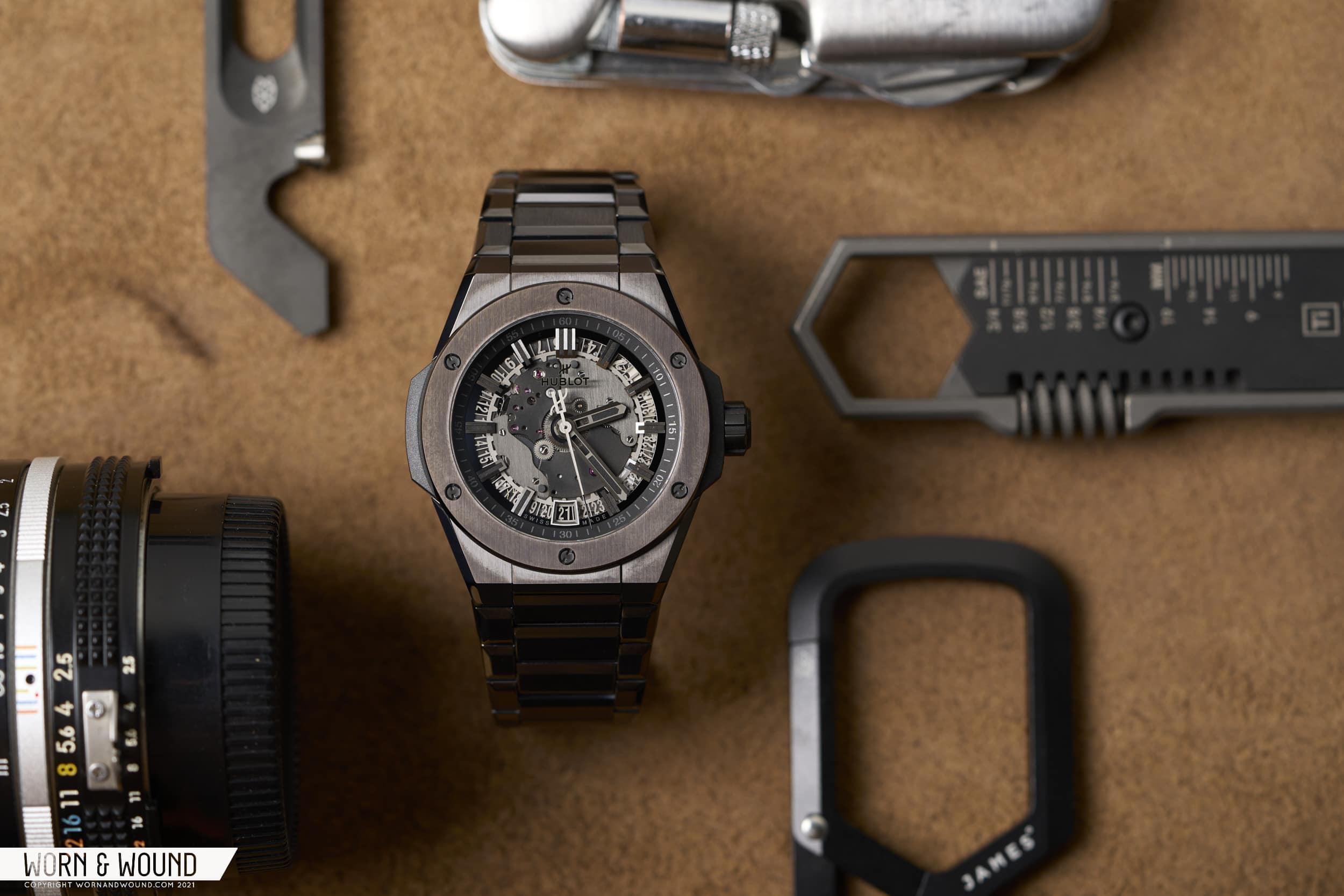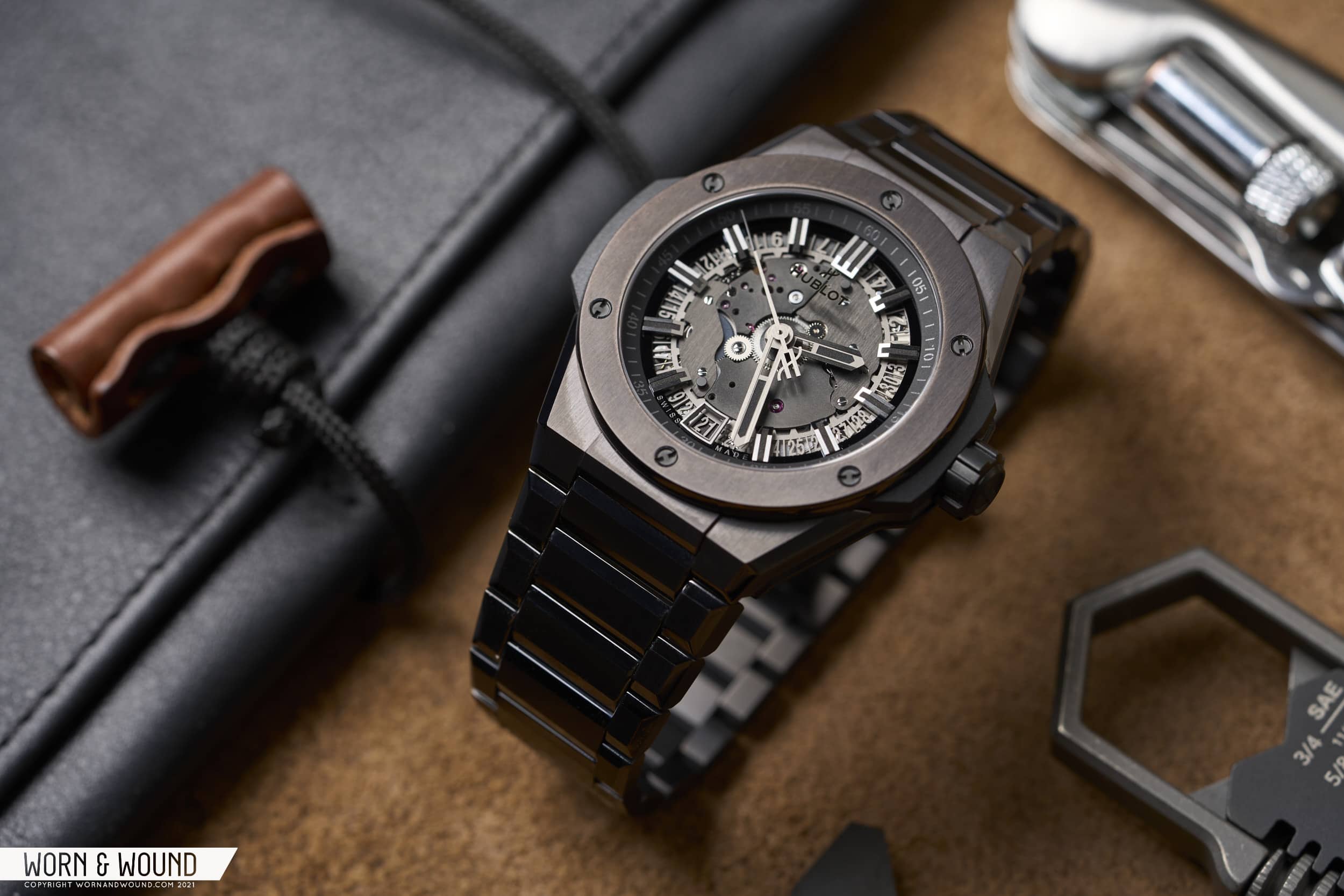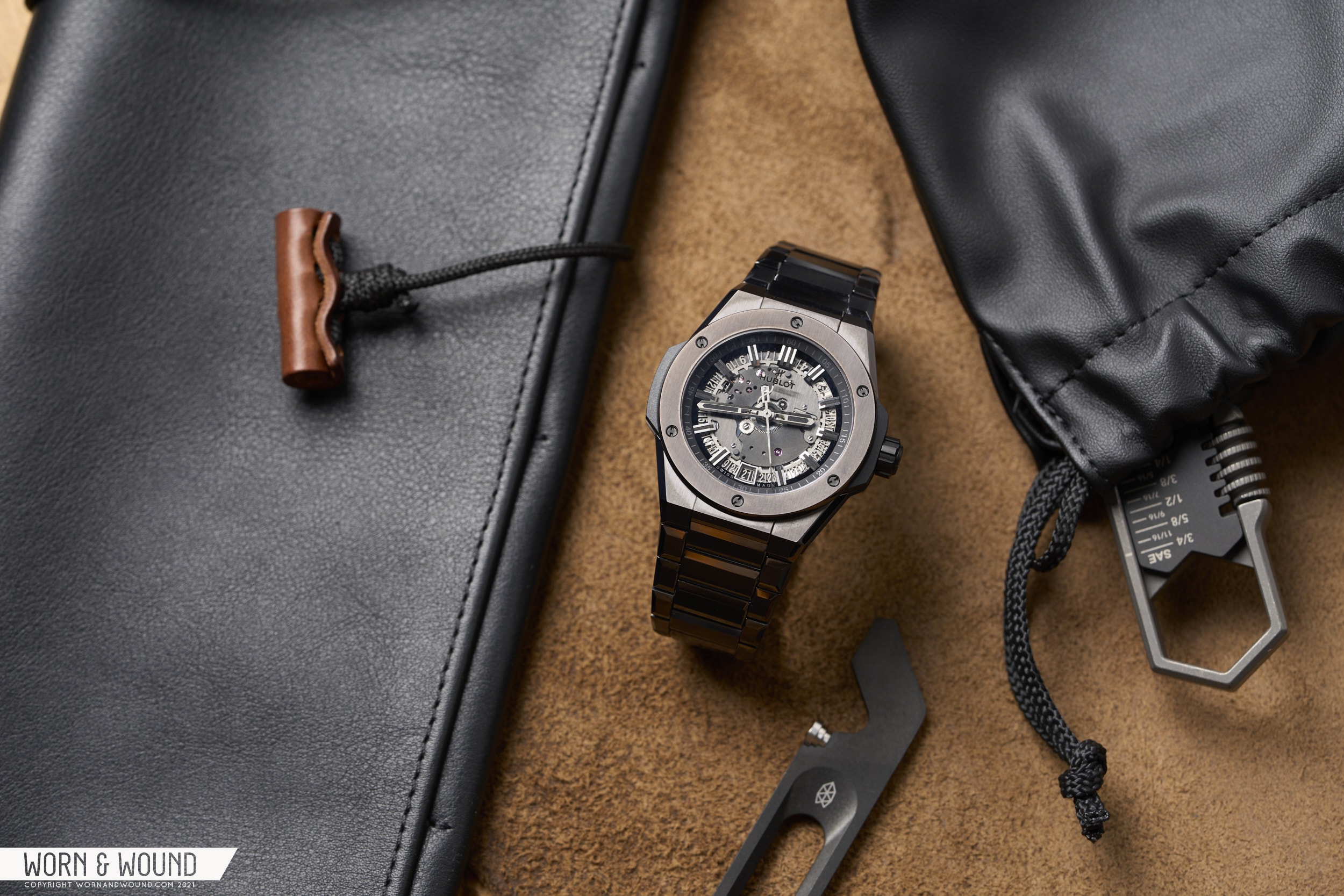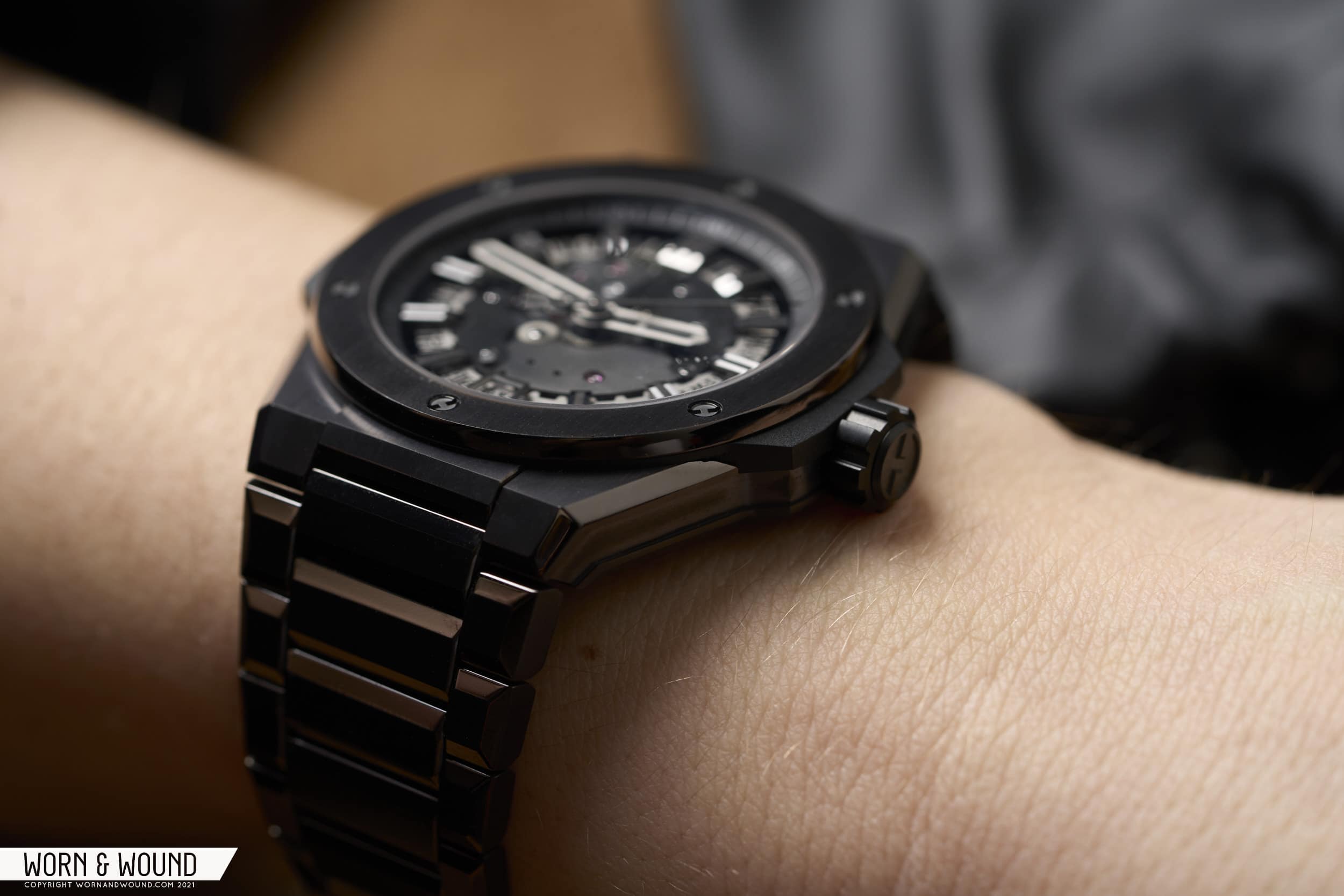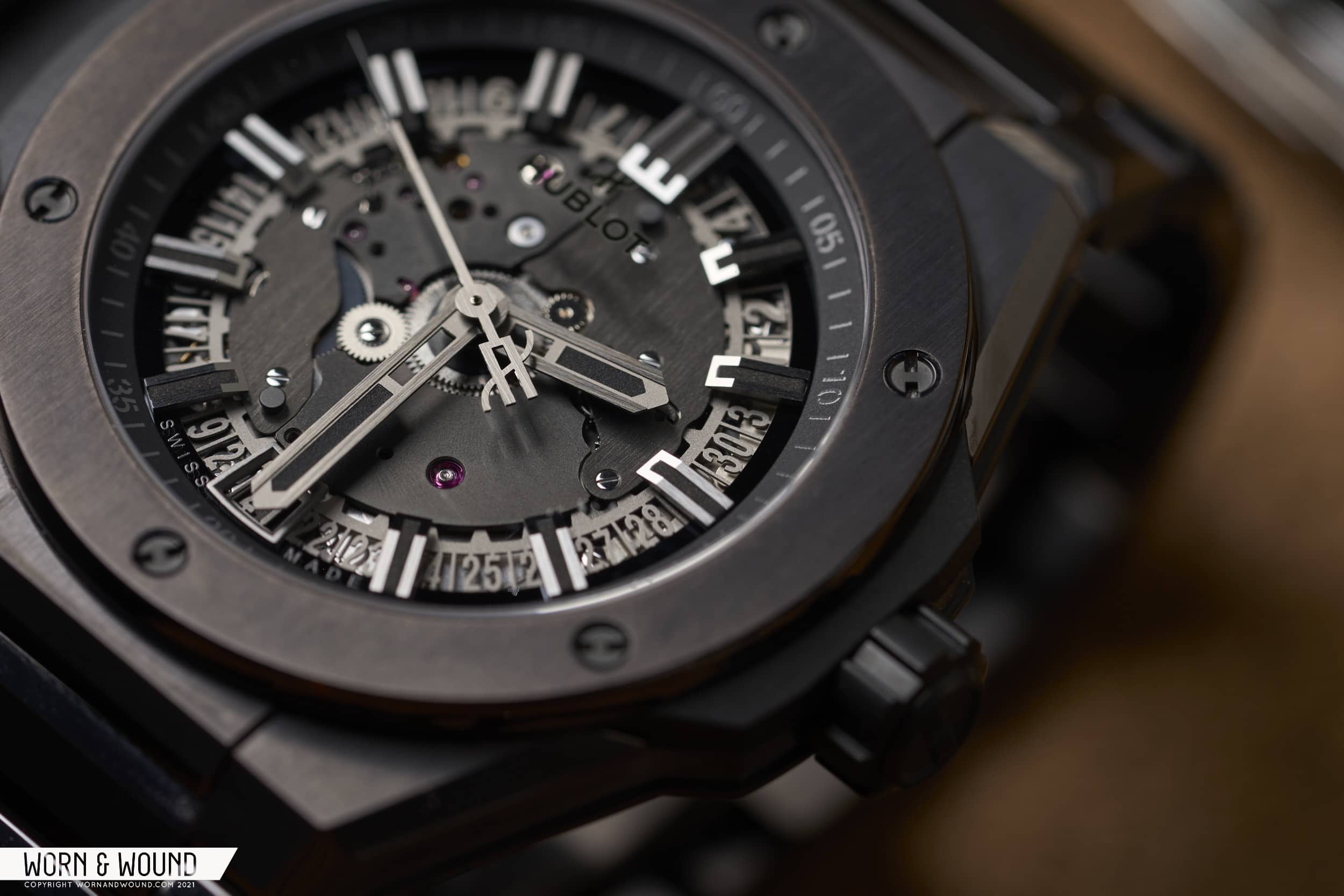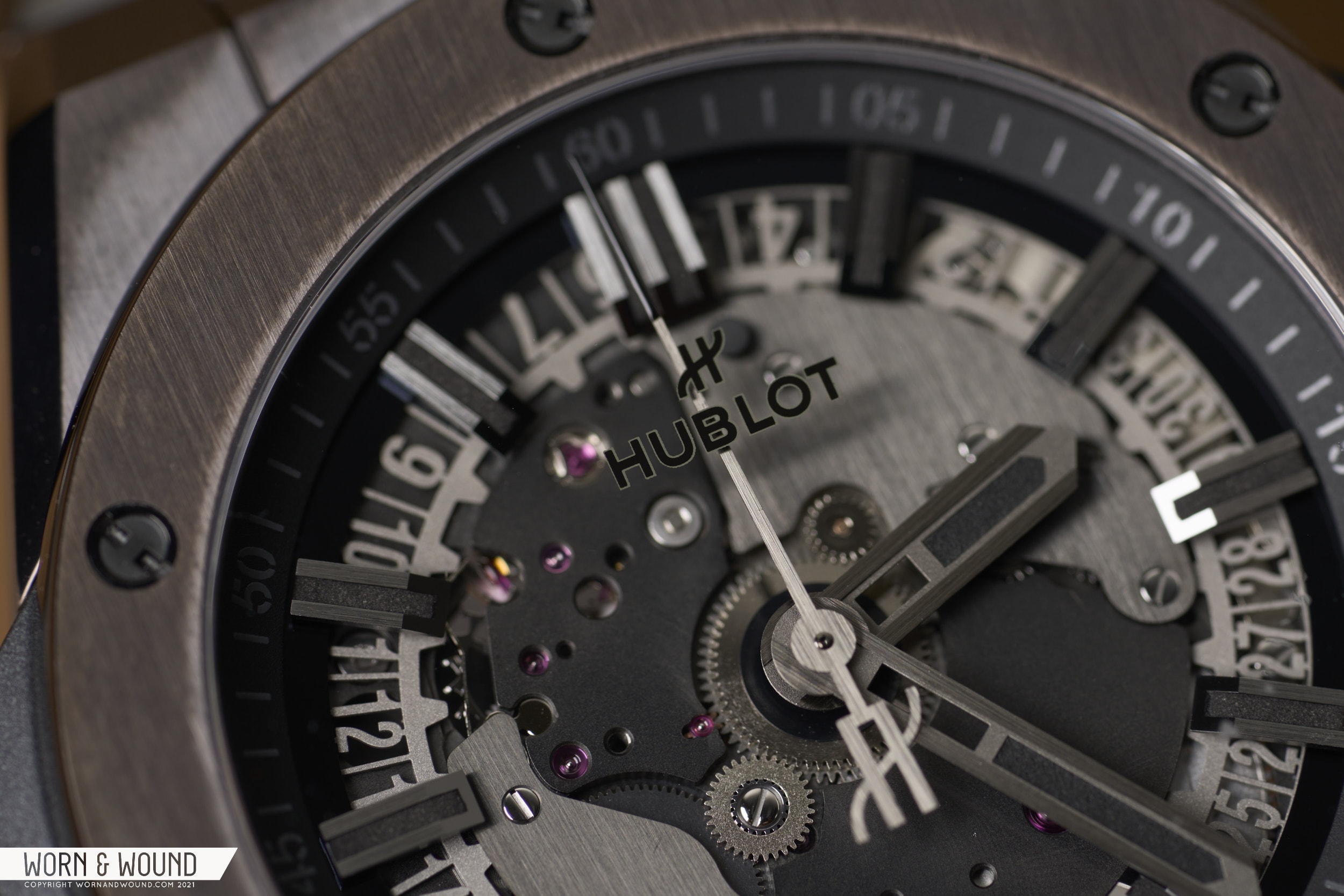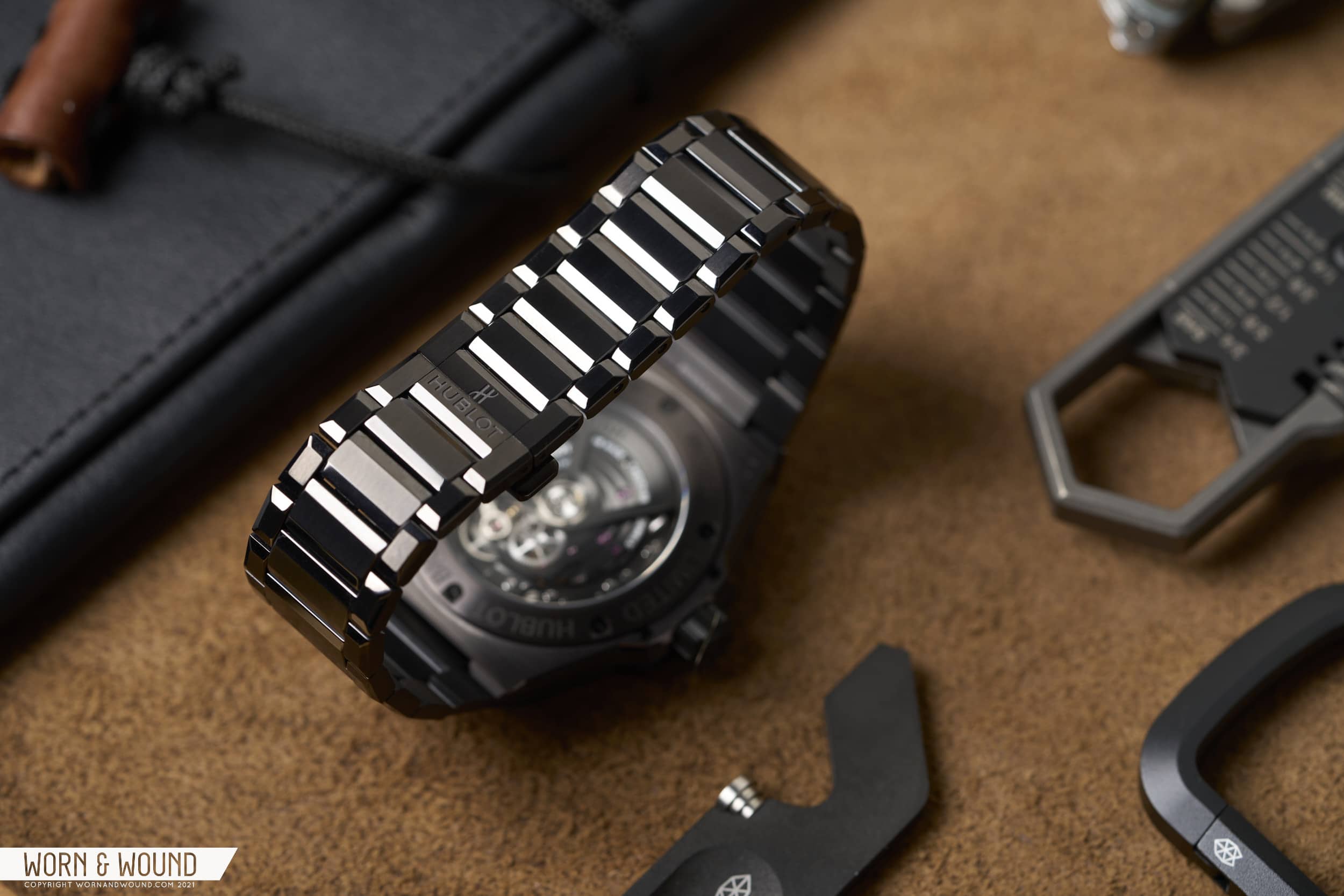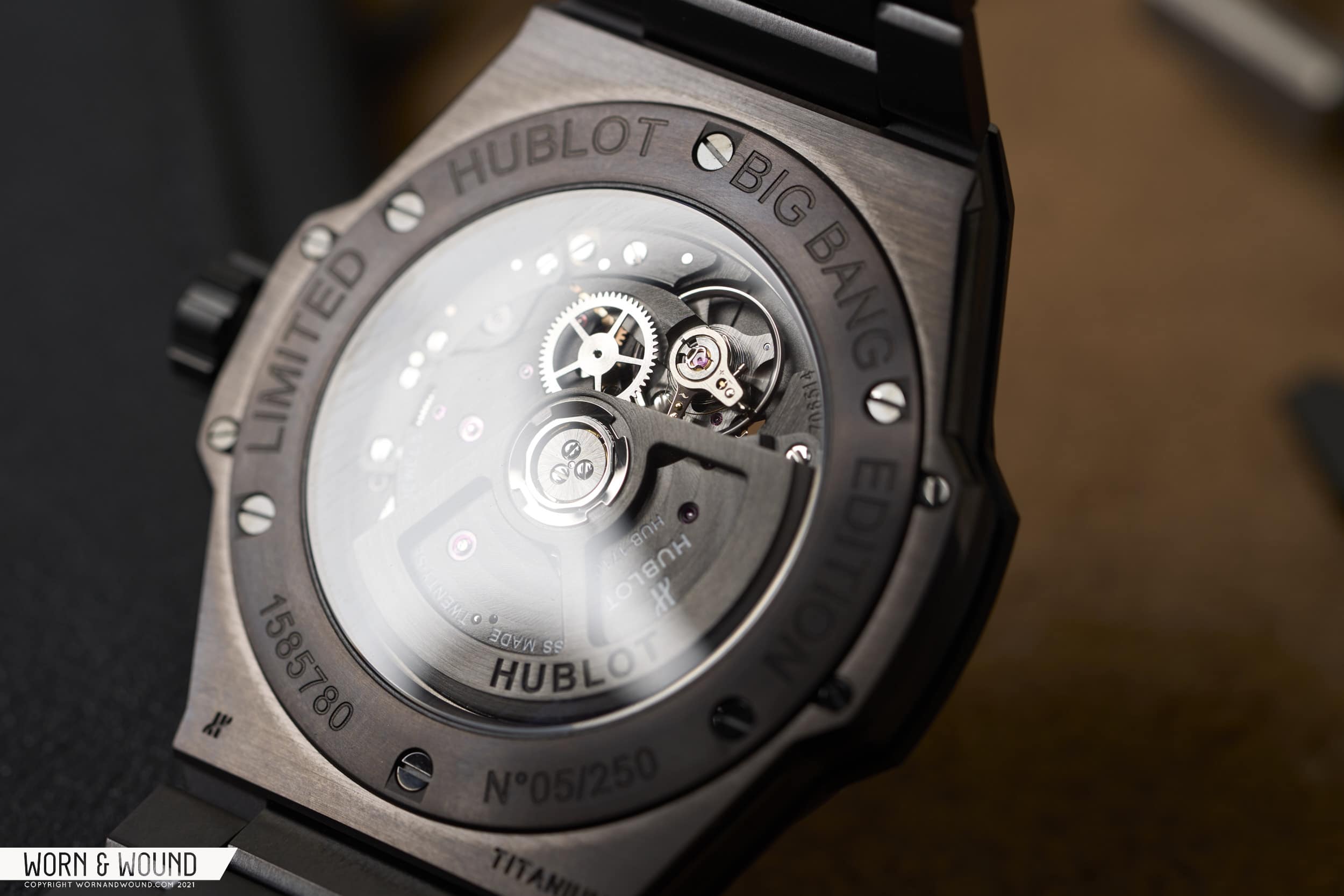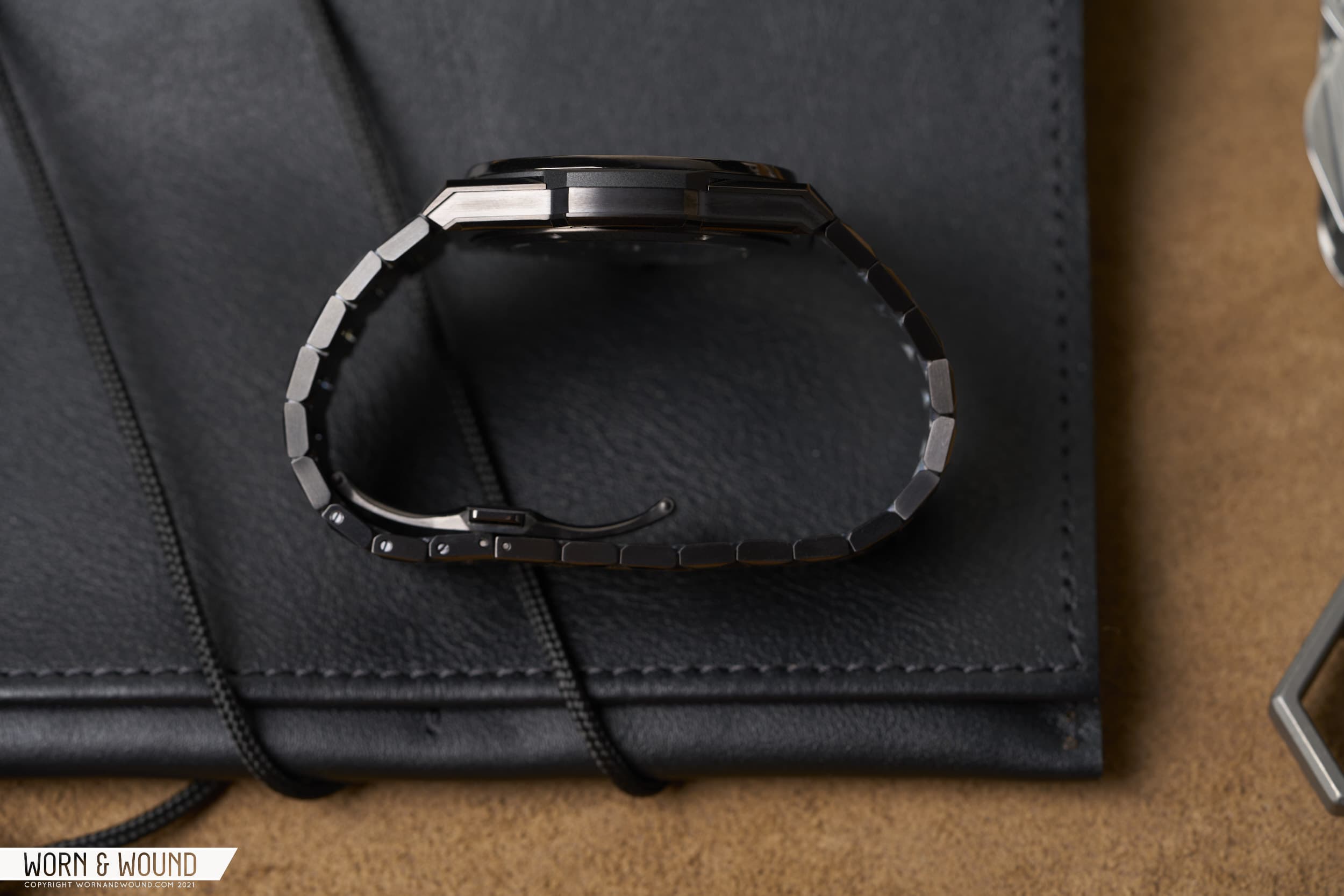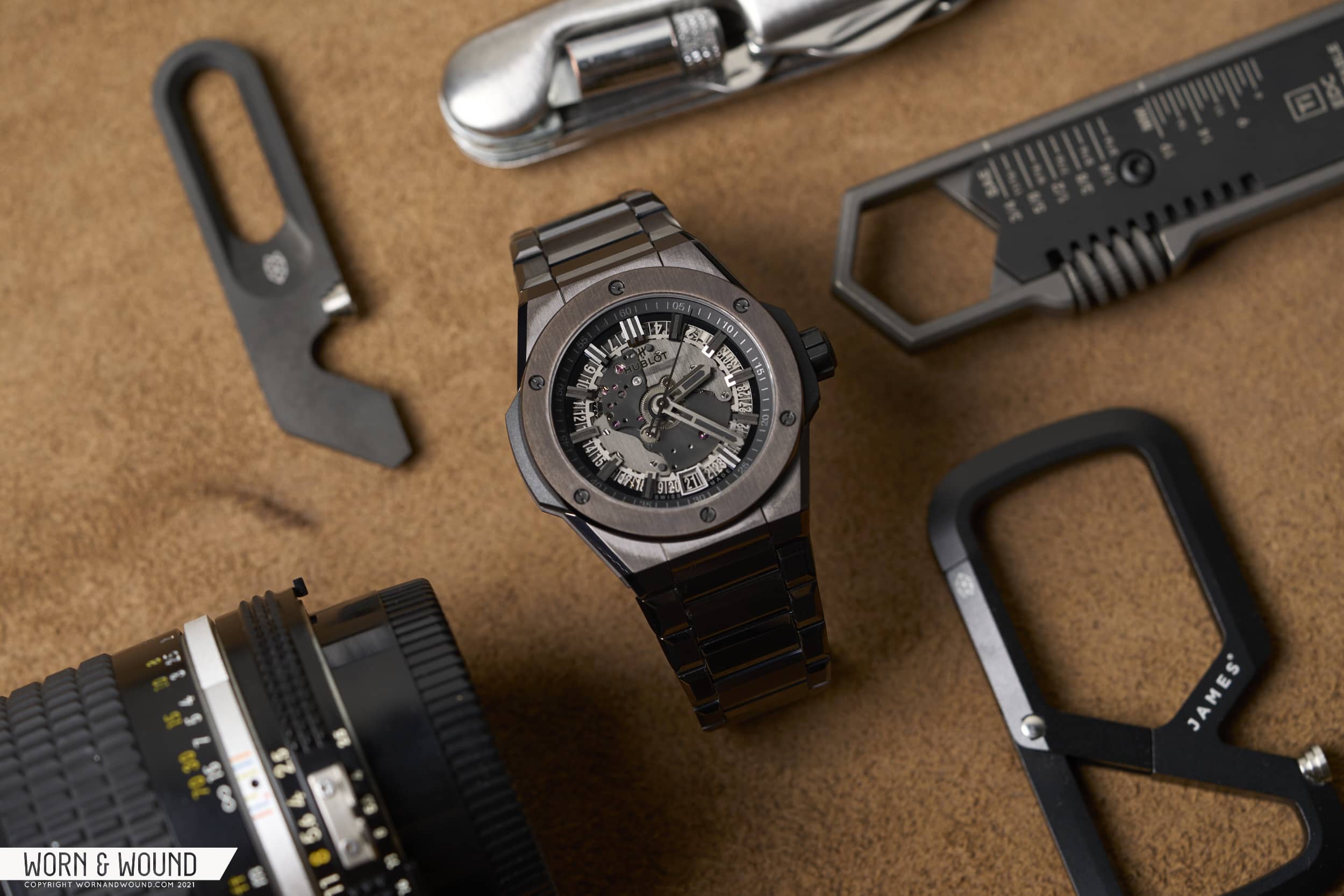Ok, let’s get it out of the way right off the bat. We don’t talk much about Hublot around here. And by not much I mean never. While their watches haven’t always been to our personal tastes, there’s no denying the reputation they’ve created for themselves thanks to their creative use of materials and the larger-than-life design language. I’ll admit, it’s not a brand I’ve traditionally paid much attention to, even if some of their releases have caught my eye over the years. You can imagine my surprise, then, to find one of their new releases, the Big Bang Time Only Integral, among the most compelling, and certainly most comfortable, watches I came across during my LVMH Watch Week preview.
As you can see, the Integral still looks every bit the Hublot that it is, so if you’ve never been a fan of their aesthetic, this isn’t likely to win you over. It’s not entirely to my taste, either. But, on the wrist, this is a watch that starts to make a lot of sense. Setting aside the hype around watches like the 5711 and 15202, a big part of their overall charm (to me, at least) is just how well they wear. They are perfectly sized, svelte, and each have bracelets that seem to melt around the wrist. All qualities that Hublot has given this new Integral Time Only.









 Featured Videos
Featured Videos




